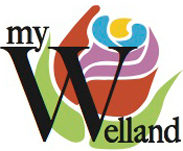With Halloween just around the corner and the end of Daylight Savings Time following close behind, CAA Niagara is reminding motorists, cyclists and pedestrians to practice great care and caution while on and around the roadways in the coming weeks.
Halloween Safety
Distractions aren’t just an issue for those behind the wheel. They also put pedestrians at a higher risk of being struck by a vehicle. Halloween can be an exciting time, but with the distraction of candy and costumes, the rules of the road can easily be forgotten. According to 2018 research from the University of British Columbia, young pedestrians are more likely to be fatally struck by a vehicle on Halloween than any other night of the year, with the most dangerous time being between 5pm and 8pm.
Additionally, a U.S. study utilizing data from the National Highway Traffic Safety Administration reported that Halloween is even more dangerous when it occurs on a weekday, with the number of collisions resulting in the injury or death of a pedestrian increasing by 55 percent. In 2022, Halloween will occur on a Monday, making the need for extra caution even more crucial.
As children and families take to the streets to look for treats on October 31st, CAA Niagara is sharing some key tips to ensure Halloween night is safe for everyone.
Tips for trick-or-treaters:
- Consider heading out at an earlier time to make sure drivers can see you on the road.
- If you do choose to venture out after dark, select costumes for your children that are bright at night and don’t obstruct their vision and hearing.
- Use reflective tape on costumes and have children carry a flashlight or glow stick for easy visibility.
- Use makeup instead of a mask to allow for better vision.
- Trick or treating in groups is always a good idea. It’s safer and groups are more visible to drivers.
Tips for drivers:
- On Halloween night, treat the streets like they’re one big school zone. Slow down, especially in and around residential neighbourhoods, and give yourself extra time to get to your destination.
- Be on the lookout for excited children who may dash across the street. Continually scan not only the road ahead, but also driveways, front yards and the spaces between parked cars.
- Buckle your kids in properly if you plan to drive them between neighborhoods. Make sure costumes with padding do not interfere with your child’s car seat, booster seat or seat belt.
- If dropping off or picking up children, be sure to communicate with other drivers by using your signals, pulling over into a safe zone and turning on your vehicle’s hazard lights.
Stay Safe As Daylight Savings Ends
On Sunday, November 6th at 2:00am, clocks will turn back by an hour to mark the end of Daylight Savings Time. The return to standard time means fewer daylight hours and reduced visibility for all road users. As people’s internal clocks adjust to the time change, there is also an increased risk of drowsy driving. When a driver is tired behind the wheel, it decreases their awareness of their surroundings, impairs their reaction time and slows their decision-making abilities.
Typically, we see an increase in collisions between motorists and pedestrians during the month of November. In fact, according to the Ontario Ministry of Transportation, personal injury collisions between the hours of 5pm and 8pm increase by an average of 19 percent during the week following the ‘fall back.’
CAA Niagara wants to remind all road users of the important role they play in keeping Niagara’s streets safe, especially during this period of increased risk. Below are some tips for drivers, pedestrians and cyclists to keep in mind before they head out on the roadways.
What drivers can do to stay safe:
- Always get a good night’s sleep, especially during the days following a time change. Limit your screen time and exposure to light right before bed and maximize your exposure to sunlight during the day to ensure a swift change of your internal clock.
- Be aware of blind spots when making turns at intersections. Check sidewalks for oncoming pedestrians before making right turns.
- Avoid distractions inside and outside of your vehicle.
- Be aware of other drivers who may drift between lanes or stop abruptly. Leave plenty of space between you and the vehicle in front of you so you have time to react.
What cyclists and pedestrians can do to stay safe:
- Be alert and aware of your surroundings at all times.
- When crossing the street, use designated intersections and crosswalks. Be sure to make eye contact with drivers before stepping onto the road.
- If travelling after dark, stick to well-lit areas and make sure you’re visible to other road users.
- Wear light or reflective clothing when out on the road to help drivers see you.
- As a cyclist, you should have a white front light, red rear light or reflector and a working bell on your bike.
For additional road safety tips and resources, please visit caaniagara.ca/community/road-safety.
ABOUT CAA NIAGARA
Founded in 1911 as the St. Catharines Automobile Club with just 16 members, CAA Niagara has grown to more than 148,000 Members with five Niagara locations; St. Catharines, Niagara Falls, Welland, Thorold and Grimsby. A not-for-profit membership organization, CAA Niagara, provides emergency road services, travel, insurance and Member rewards.
 Back to myNiagaraOnline
Back to myNiagaraOnline




















